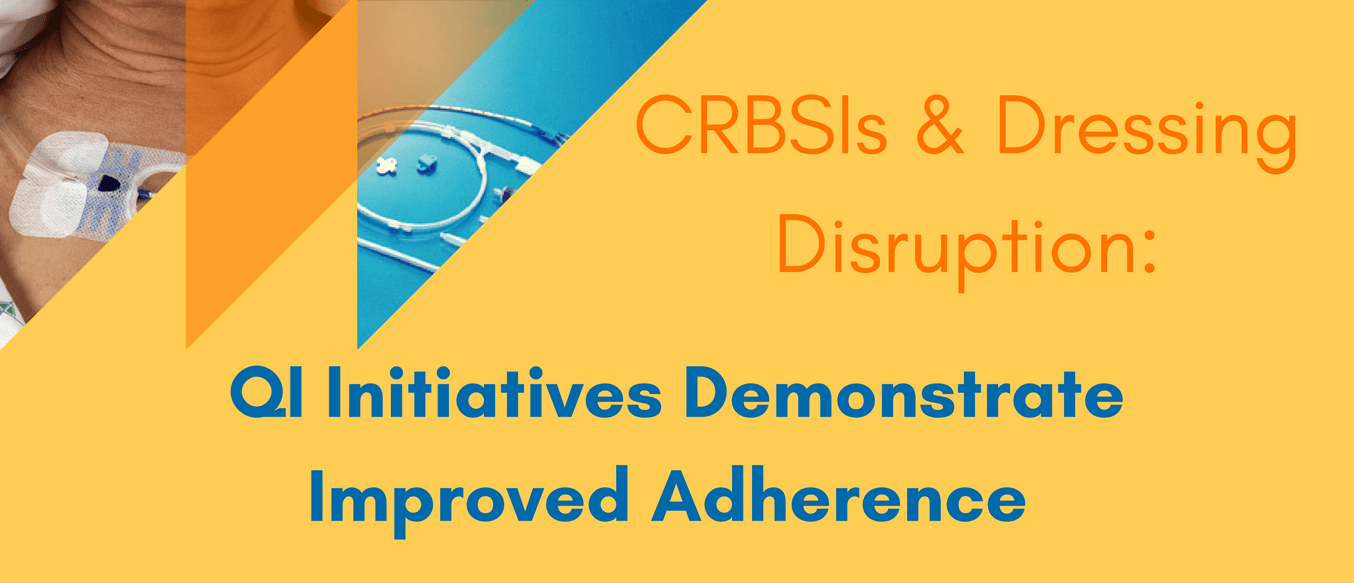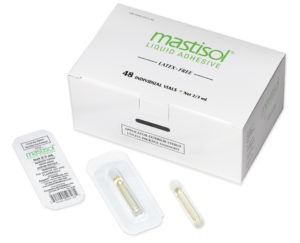
Welcome back to the third in this series of blogs focusing on Catheter-Related Bloodstream Infections (CRBSIs). In the first blog, the importance of ensuring the integrity of medical dressings and devices over extended periods of time was reviewed (View Blog 1 of 3). Blog 2 of the series reviewed the clinical impact products compatible with chlorhexidine gluconate (CHG) have on CRBSIs (View Blog 2 of 3).
This blog will examine quality improvement (QI) initiatives undertaken at 3 separate institutions that led to noteworthy findings, all of which were presented at various scientific meetings in poster format.1-3
| QI INITIATIVE 1: Increase Catheter Dressing Adherence1 |
| DESCRIPTION: A before-after survey was conducted by licensed nursing personnel to assess catheter adherence. Dressing observations made included dry/intact; edges lifted; partially lifted; and total detachment. |
| PURPOSE: Observe the impact of Mastisol® Liquid Adhesive use on central venous catheter (CVC) dressing adherence in a Florida hospital. Poster presented at the Association for Vascular Access Annual Scientific Meeting, Sept. 2014 |
KEY FINDING: Use of Mastisol® resulted in:
|
| QI INITIATIVE 2: Enhance Adherence to Best Practices2 |
| DESCRIPTION: An evidence-based, nurse-driven initiative was designed and implemented to reduce central line dressing disruptions. |
| PURPOSE: Determine the effectiveness of Mastisol® for enhancing CVC dressing adherence. Central-line associated bloodstream infections (CLABSI) were also monitored before, during and after the QI initiative (this is referred to as a point prevalence survey). Poster presented at the Greater Cincinnati AACN Chapter Meeting, April 2016 |
KEY FINDINGS:
|
| QI INITIATIVE 3: Improve Adhesion of Internal Jugular Dressings3 |
| DESCRIPTION: A root cause analysis found an increased number of central venous catheter (CVC) insertions in the internal jugular (IJ) site which were associated with dressing disruption, and about 70% of catheter dressings were changed before day 7. Before-after point prevalence surveys were conducted. |
| PURPOSE:Determine the effect of Mastisol® on the adherence of all IJ CVC dressings in 2 ICUs within a hospital (a root cause analysis had shown an increased number of CVC insertions at the IJ site were associated with dressing disruption, and 70% of CVC dressings were being changed before day 7). Poster presented at the Association for Vascular Access Annual Scientific Meeting, Sept. 2016 |
KEY FINDINGS:
|
These QI initiatives further demonstrate the use of Mastisol® to reduce likelihood of dressing disruption, and minimize the risk of infection by creating a lasting occlusive dressing barrier.
 For more information about Mastisol®, please contact your sales consultant or Eloquest Healthcare®, Inc., call 1-877-433-7626 or visit www.eloquesthealthcare.com.
For more information about Mastisol®, please contact your sales consultant or Eloquest Healthcare®, Inc., call 1-877-433-7626 or visit www.eloquesthealthcare.com.
Minimizing infection risk is an essential part of optimizing “The Triple Aim” of the Affordable Care Act. Eloquest Healthcare is committed to providing solutions that can help you reduce risk of conditions like a CAUTI, CLABSI, or SSI.
Next time, join us for a 2-part series on the prevalence and treatment of Medical Adhesive-Related Skin Injuries (MARSI).
Reference:
- Pullen D. Quality Improvement Initiative to Improve Dressing Adherence Reveals Improved Dressing Adherence Observations on a Before-After Analysis. Presented at: Association for Vascular Access Annual Scientific Meeting, September 7-10, 2014; Washington DC.
- Browne B, Moffo H. Quality Improvement Initiative Results in Fewer Dressing Disruptions and Improved Adherence to Best Practices. Presented at: Greater Cincinnati AACN Chapter, 28th Annual Trends in Critical Care Conference, April 8, 2016.
- Niehaus S, McCord J. Improving Adhesion of Internal Jugular Dressings in the Intensive Care Unit. Presented at Association for Vascular Access Annual Scientific Meeting, September 16-19, 2016. Orlando, FL.







